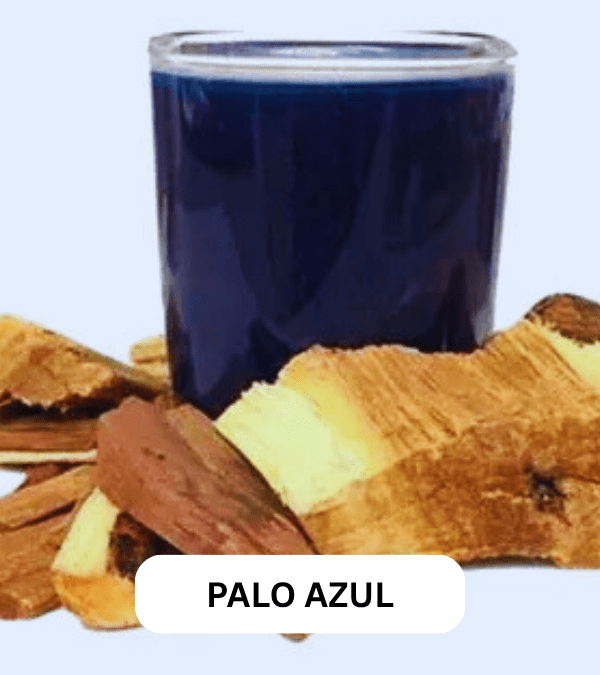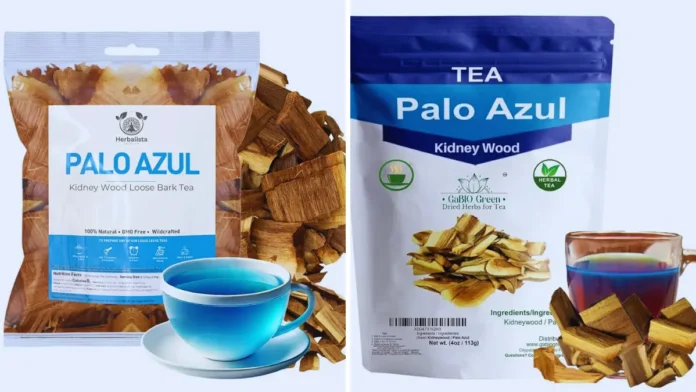There are few drinks in the herbal world as captivating as palo azul. Known for its striking blue colour and mysterious glow under sunlight, this ancient Mexican tea has travelled from indigenous rituals to modern wellness routines. Today, it’s winning hearts across the UK for its beauty, taste, and claimed detoxifying properties.
Often called “blue stick” in Spanish, palo azul is more than just a trendy herbal infusion — it’s a centuries-old remedy steeped in tradition and science. People praise it for kidney cleansing, aiding digestion, and offering a natural source of antioxidants. But what exactly makes this blue tea so special, and does it truly live up to its reputation?
In this in-depth guide, we’ll explore everything about Palo-Azul: its origins, unique chemistry, health benefits, how to brew it correctly, and what to know before you sip. By the end, you’ll see why palo azul is becoming the UK’s latest wellness obsession.
What Is Palo Azul?
Palo azul is a herbal tea made from the bark of the Eysenhardtia polystachya tree, native to Mexico and parts of Central America. The name translates directly to “blue stick,” a reference to the wood’s ability to tint water a soft, shimmering blue when brewed.
Traditionally, locals used palo azul as a remedy for kidney issues, inflammation, and detoxification. The bark is typically cut into small pieces or chips, which are boiled in water until the colour changes from amber to a luminous blue hue. Unlike heavily flavoured teas, palo azul has a delicate, earthy taste with hints of vanilla and wood smoke — soothing and refreshing, especially when served chilled.
In recent years, Palo-Azul has gained traction beyond Latin America, finding its way into UK wellness stores and herbal shops. Its natural blue tint and health claims have made it particularly popular on social media, where it’s often dubbed the “magic blue tea.”
The Fascinating Blue Colour: Science Behind the Magic
One of the most alluring features of palo azul is its ability to produce a vivid blue colour without artificial dyes. The secret lies in its natural flavonoid compounds — antioxidants that react to changes in pH levels. When Palo-Azul is brewed in neutral or slightly alkaline water, these compounds reflect blue wavelengths of light, giving the drink its signature hue.
Interestingly, the shade of blue can vary depending on the water source and mineral content. In distilled water, it tends to appear lighter and more transparent, while in mineral-rich water, the colour deepens. Under direct sunlight, the tea even seems to glow, a phenomenon that continues to fascinate chemists and herbal enthusiasts alike.
While the colour may seem magical, it’s a simple interaction of chemistry and nature — proof of how plant compounds can create visual wonders.
Historical Uses of Palo Azul
Long before it became an Instagram sensation, palo azul played a sacred role in ancient traditions. Indigenous tribes in Mexico used the bark not only for medicinal purposes but also in spiritual cleansing rituals. It was believed to purify the body and spirit, helping people align with natural balance.
In folk medicine, it was often prescribed for urinary tract infections, liver support, and inflammation relief. Healers would brew the bark slowly over fire, allowing its essence to infuse into the water. Some traditions even viewed the tea’s blue glow as a sign of healing energy — a gift from nature.
Over the centuries, Palo-Azul travelled across cultures and continents, gradually earning a reputation as a detox tea and holistic tonic. Its resurgence today is part of a broader movement towards natural remedies and herbal wellness in the modern world.
Health Benefits of Palo Azul Tea
1. Kidney and Urinary Tract Health
One of the most discussed benefits of palo azul is its ability to support kidney function. The tea acts as a mild diuretic, helping to flush out toxins and excess salts from the urinary system. Many people use it as a natural way to cleanse the kidneys and maintain bladder health.
2. Anti-inflammatory Properties
Thanks to its flavonoids and polyphenols, palo azul may help reduce inflammation throughout the body. This makes it potentially beneficial for those suffering from arthritis, joint pain, or general fatigue.
3. Rich in Antioxidants
Antioxidants found in palo azul combat oxidative stress — one of the main contributors to ageing and chronic diseases. Regular consumption may support immune function and overall vitality.
4. Blood Sugar Regulation
Some preliminary studies suggest that palo azul could help stabilise blood glucose levels, making it an interesting supplement for those monitoring their diet.
5. Weight Management Support
Its mild detoxifying effect and zero-calorie content make palo azul a perfect companion for weight management programmes. When paired with a balanced diet, it can support natural cleansing and hydration.
While these benefits are promising, it’s important to note that palo azul should not replace medical treatment. Always consult your healthcare provider before using it for therapeutic purposes.
How to Prepare Palo Azul Tea (Step-by-Step Guide)

Ingredients:
- 1 litre of water
- 10–15 grams of palo azul bark chips
- Optional: lemon, cinnamon, or honey for flavour
Method:
- Boil the water in a stainless-steel pot.
- Add the palo azul bark and reduce heat to low.
- Simmer for 30–45 minutes, until the water turns a deep amber or blue shade.
- Strain the liquid into a glass jar or teapot.
- Let it cool slightly before serving.
Tips:
- The longer you simmer, the deeper the colour and flavour.
- Serve hot or refrigerate for a refreshing iced tea.
- For a stronger brew, reuse the bark chips once more.
The brewing ritual itself feels meditative — a moment to pause and reconnect with nature’s simplicity.
Palo Azul in Modern Wellness Culture
In the UK, palo azul has found a home among herbalists, fitness coaches, and wellness influencers. Its vivid blue hue makes it highly shareable on Instagram and TikTok, while its potential detox effects appeal to those exploring plant-based lifestyles.
Nutritionists often compare palo azul to matcha or butterfly pea tea — another naturally blue infusion. However, unlike matcha, it’s caffeine-free and doesn’t rely on milk or sugar to taste pleasant. It’s also more subtle, offering a woodsy flavour ideal for slow mornings or evening relaxation.
From high-end health cafés in London to independent wellness shops in Manchester, palo azul has quietly become a symbol of mindful living — where visual beauty meets holistic benefit.
Safety and Side Effects: What You Should Know
While palo azul is generally safe for most people, moderation is essential. Drinking large quantities may overstimulate the kidneys, leading to dehydration or electrolyte imbalance.
Here are a few safety tips:
- Pregnant or breastfeeding women should avoid it unless approved by a doctor.
- People with chronic kidney conditions or those on medication should consult a healthcare professional.
- Always ensure your palo azul is sourced from reputable suppliers, free from contaminants.
As with any herbal product, balance is key — it’s a complement to wellness, not a cure-all.
Palo Azul for Detox and Drug Tests: Fact or Fiction?
The internet is full of claims that palo azul can help “pass” drug tests. However, there’s no scientific proof to support this. While the tea does have diuretic properties, which increase urination and may flush certain metabolites, it doesn’t eliminate drug traces effectively or legally.
What’s true is that palo azul supports natural kidney cleansing and hydration. Drinking it can make you feel refreshed and lighter — but it’s not a magic detox formula. Use it for wellness, not shortcuts.
Buying Palo Azul: How to Choose Quality Tea
If you’re buying palo azul in the UK, look for the following:
- 100% pure bark chips: Avoid products mixed with artificial colourants.
- Transparent packaging: So you can see the quality of the bark.
- Certified organic or wild-harvested: Ensures it’s pesticide-free.
- Reputable online stores: Such as herbal apothecaries or established wellness retailers.
A good palo azul should have a light, woody aroma and turn the water blue after boiling — a natural sign of authenticity.
Sustainability and Ethical Harvesting
As demand for palo azul increases, sustainability becomes a serious concern. The Eysenhardtia polystachya tree grows slowly, and overharvesting could threaten its natural habitats. Ethical brands now work with local farmers in Mexico who practice sustainable bark harvesting — removing only small portions to allow regrowth.
When purchasing, choose brands that promote fair trade and ecological balance. Supporting these initiatives not only protects biodiversity but also empowers indigenous communities who have cultivated this knowledge for generations.
FAQs
What does Palo Azul taste like?
It has a smooth, earthy flavour with soft notes of vanilla and wood — light and pleasant.
Can it help with kidney stones?
Traditionally, it has been used to support kidney function, but there’s limited scientific proof. Always consult a doctor for medical treatment.
Is Palo Azul caffeine-free?
Yes, it’s completely caffeine-free, making it suitable for evening relaxation.
How often can I drink it?
Up to one or two cups per day is generally considered safe.
Can I add lemon or honey?
Absolutely. Lemon enhances the flavour and may even intensify the blue colour. Honey adds natural sweetness without reducing the benefits.
Conclusion
Palo azul is more than a herbal drink — it’s a story of ancient wisdom, nature’s chemistry, and modern curiosity. From the deserts of Mexico to tea tables in London, its journey reflects humanity’s constant search for balance and beauty.
Whether you’re exploring it for health benefits or simply captivated by its mesmerising hue, palo azul offers an experience that’s as soothing as it is unique. Brew it slowly, savour the glow, and let this “blue stick” remind you that the best remedies are often hidden in nature’s simplest forms.

